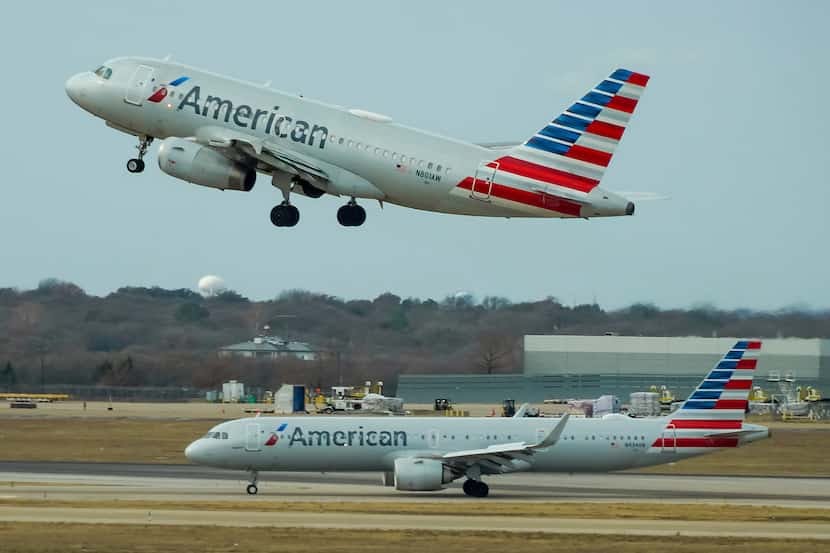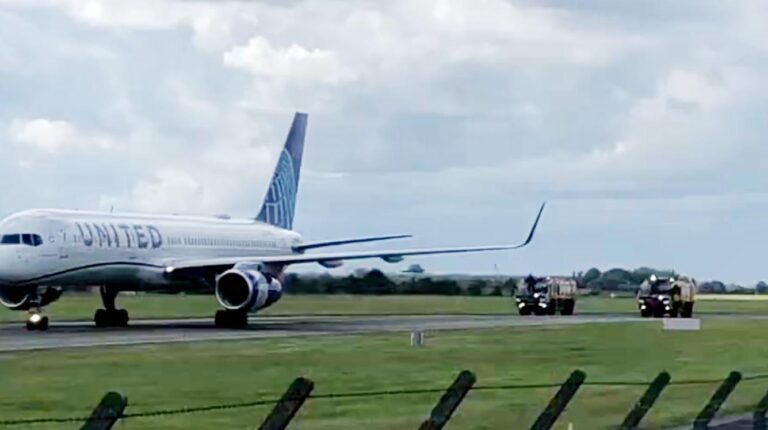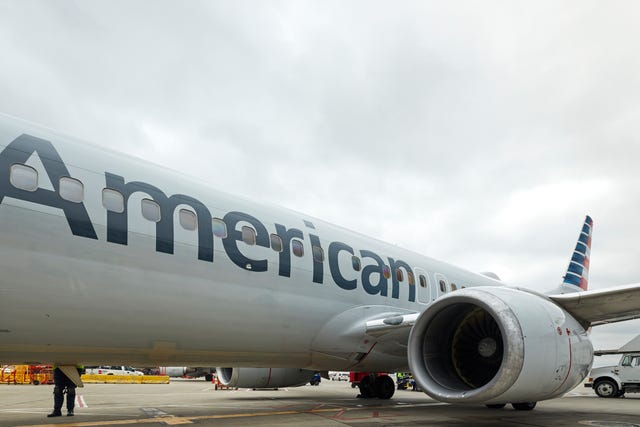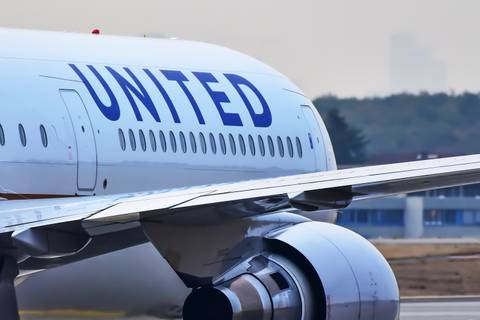American Airlines flight reaches 840 mph and possible world record
The Boeing 787-9 Dreamliner landed early due to strong tailwinds in its flight path.An American Airlines flight from Philadelphia to Doha, Qatar, reached 840 mph and landed almost 30 minutes early due to strong tailwinds, which could shatter a world record.
On Saturday, American Flight 120 on a Boeing 787-9 Dreamliner took off from Philadelphia around 9:25 p.m. Eastern and landed at 4:57 p.m. in Doha, according to FlightAware. The Fort Worth-based airline confirmed the flight landed approximately 30 minutes early due to the strong tailwinds midflight. The same flight on Sunday also arrived about 30 minutes early due to the tailwinds.According to FlightAware, the flight’s jet stream, or winds in the upper levels of the atmosphere, reached 265 mph. The flight’s ground speed was above the speed of sound of 767 miles per hour but didn’t make a sonic boom because it was moving at normal cruising speed in relation to the air around it.
According to the Guinness Book of World Records’ website, the fastest transatlantic flight on a commercial airplane was a flight from New York to London, which was last recorded on a British Airways flight on Feb. 9, 2020. An extratropical cyclone occurred in the plane’s flight path, but the air mass around the plane was moving up to 260 mph. That led to the plane traveling at 825 mph with its surroundings, according to the World Records’ website.
Guinness Book of World Records officials did not respond immediately to a request for confirmation of a record break.
The overall record for the fastest transatlantic flight is held by the retired supersonic Concorde jet, according to the Guinness Book of World Records. On Feb. 7, 1996, a British Airways Concorde flew between New York and London at an average speed of 1,250 mph in 2 hours, 52 minutes and 59 seconds.
On Sept. 20, 1973, a Concorde supersonic jet landed on American soil for the first time, marking the dedication of what is known today as DFW International Airport. DFW Airport is celebrating 50 years in operation this year.
The Boeing 787-9 Dreamliner is renowned for its advanced technology, fuel efficiency, and long-haul capabilities. This aircraft recently made headlines when an American Airlines flight from Philadelphia to Doha, Qatar, recorded extraordinary speeds due to favorable tailwinds. This event highlights both the marvels of modern aviation and the unpredictable nature of atmospheric conditions that can significantly impact flight times.
On a typical Saturday evening, American Airlines Flight 120 departed from Philadelphia at approximately 9:25 p.m. Eastern time. The aircraft, a Boeing 787-9 Dreamliner, cruised through the skies and touched down in Doha at 4:57 p.m. local time, a full 30 minutes ahead of its scheduled arrival. This early arrival was primarily due to strong tailwinds encountered during the flight. According to FlightAware, a flight tracking service, the jet stream – or winds at the upper levels of the atmosphere – reached an astonishing 265 mph. These strong tailwinds enabled the flight to achieve a ground speed of 840 mph.
To put this in perspective, the speed of sound is 767 mph. While the Dreamliner exceeded this speed in terms of ground speed, it did not break the sound barrier because it was moving at its normal cruising speed relative to the air around it. This distinction is crucial as breaking the sound barrier would typically result in a sonic boom, which did not occur in this instance.
Interestingly, this was not an isolated incident. The same flight the following day also arrived 30 minutes early, further emphasizing the impact of the strong jet stream. These consistent early arrivals due to favorable atmospheric conditions showcase the complex interplay between aviation technology and natural forces.
The record-breaking potential of this flight draws attention to historical achievements in aviation speed. According to the Guinness Book of World Records, the fastest transatlantic flight on a commercial airplane was recorded on February 9, 2020, by a British Airways flight from New York to London. This flight took advantage of an extratropical cyclone in its path, which resulted in winds moving up to 260 mph. Consequently, the plane traveled at 825 mph with respect to its surroundings. This remarkable speed highlights how atmospheric phenomena can significantly enhance flight performance.
However, the overall record for the fastest transatlantic flight is held by the retired supersonic Concorde jet. On February 7, 1996, a British Airways Concorde flew from New York to London at an average speed of 1,250 mph, completing the journey in a mere 2 hours, 52 minutes, and 59 seconds. The Concorde, with its ability to cruise at supersonic speeds, was a marvel of its time and remains an iconic symbol of aviation excellence.
The Concorde’s legacy is further commemorated by its historic landing on American soil on September 20, 1973. This event marked the dedication of what is now known as Dallas/Fort Worth International Airport (DFW). As DFW Airport celebrates its 50th year in operation, this milestone serves as a reminder of the advancements and milestones in aviation history.
The recent performance of the American Airlines Boeing 787-9 Dreamliner, although not supersonic, is a testament to the ongoing evolution of commercial aviation. Modern aircraft like the Dreamliner are designed to be more fuel-efficient and capable of longer non-stop flights. The 787-9 model, in particular, features advanced aerodynamics, lightweight composite materials, and state-of-the-art engines. These innovations contribute to its ability to handle long-haul routes with improved fuel efficiency and passenger comfort.
The influence of tailwinds on flight duration is a well-known phenomenon in aviation. Pilots and flight planners routinely analyze weather patterns and jet streams to optimize flight paths and reduce travel time. Tailwinds, which blow in the same direction as the aircraft’s travel, can significantly increase ground speed, leading to earlier arrivals. Conversely, headwinds, which blow against the direction of travel, can slow down the aircraft and result in delays.
In the case of American Airlines Flight 120, the strong tailwinds encountered during the flight from Philadelphia to Doha were particularly beneficial. The jet stream, a narrow band of strong winds in the upper atmosphere, played a crucial role in propelling the aircraft at high speeds. The presence of a robust jet stream is often associated with significant weather systems and can vary in strength and location.
While the flight’s early arrival is noteworthy, it is essential to consider the broader implications of such events. Airlines strive to maintain punctuality and minimize delays, and favorable tailwinds can contribute to improved on-time performance. Additionally, shorter flight durations can lead to fuel savings, reducing operational costs and environmental impact. However, airlines must also ensure that early arrivals do not disrupt airport operations or passenger schedules.
The pursuit of speed records in aviation has a long and storied history. From the pioneering days of early aviation to the era of supersonic flight, each milestone has pushed the boundaries of what is possible. The Concorde, with its ability to cruise at twice the speed of sound, remains a symbol of human ingenuity and technological achievement. Although the Concorde was retired in 2003, its legacy continues to inspire advancements in aviation technology.
In recent years, there has been renewed interest in supersonic travel. Several companies are developing next-generation supersonic jets that aim to revive the dream of ultra-fast air travel. These aircraft promise to cut travel times significantly, making it possible to cross the Atlantic or the Pacific in just a few hours. While regulatory and technical challenges remain, the prospect of supersonic flight returning to commercial aviation is an exciting possibility.
The Boeing 787-9 Dreamliner’s recent performance on the Philadelphia to Doha route underscores the dynamic nature of aviation and the impact of atmospheric conditions on flight operations. As airlines continue to innovate and improve their fleets, the quest for speed, efficiency, and passenger comfort remains at the forefront of their efforts. Whether through advanced aerodynamics, cutting-edge materials, or the strategic use of tailwinds, the future of aviation holds the promise of faster and more efficient travel for passengers around the world.
The American Airlines Boeing 787-9 Dreamliner’s early arrival on Flight 120 due to strong tailwinds is a remarkable example of how natural forces can enhance aviation performance. While it may not rival the supersonic speeds of the Concorde, it highlights the ongoing advancements in commercial aviation and the potential for future innovations. As the aviation industry continues to evolve, passengers can look forward to more efficient and enjoyable travel experiences, driven by a combination of cutting-edge technology and the ever-changing dynamics of the atmosphere.






